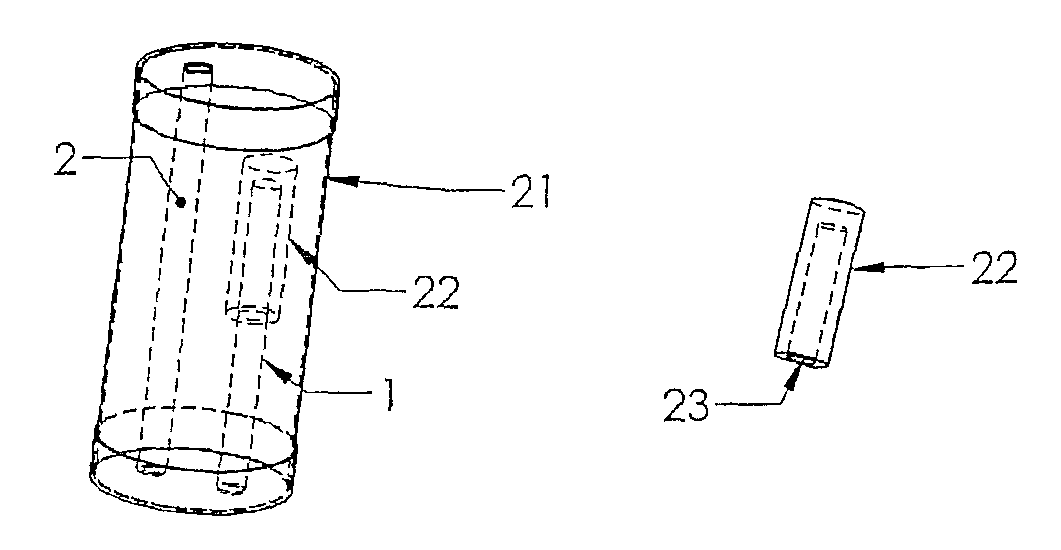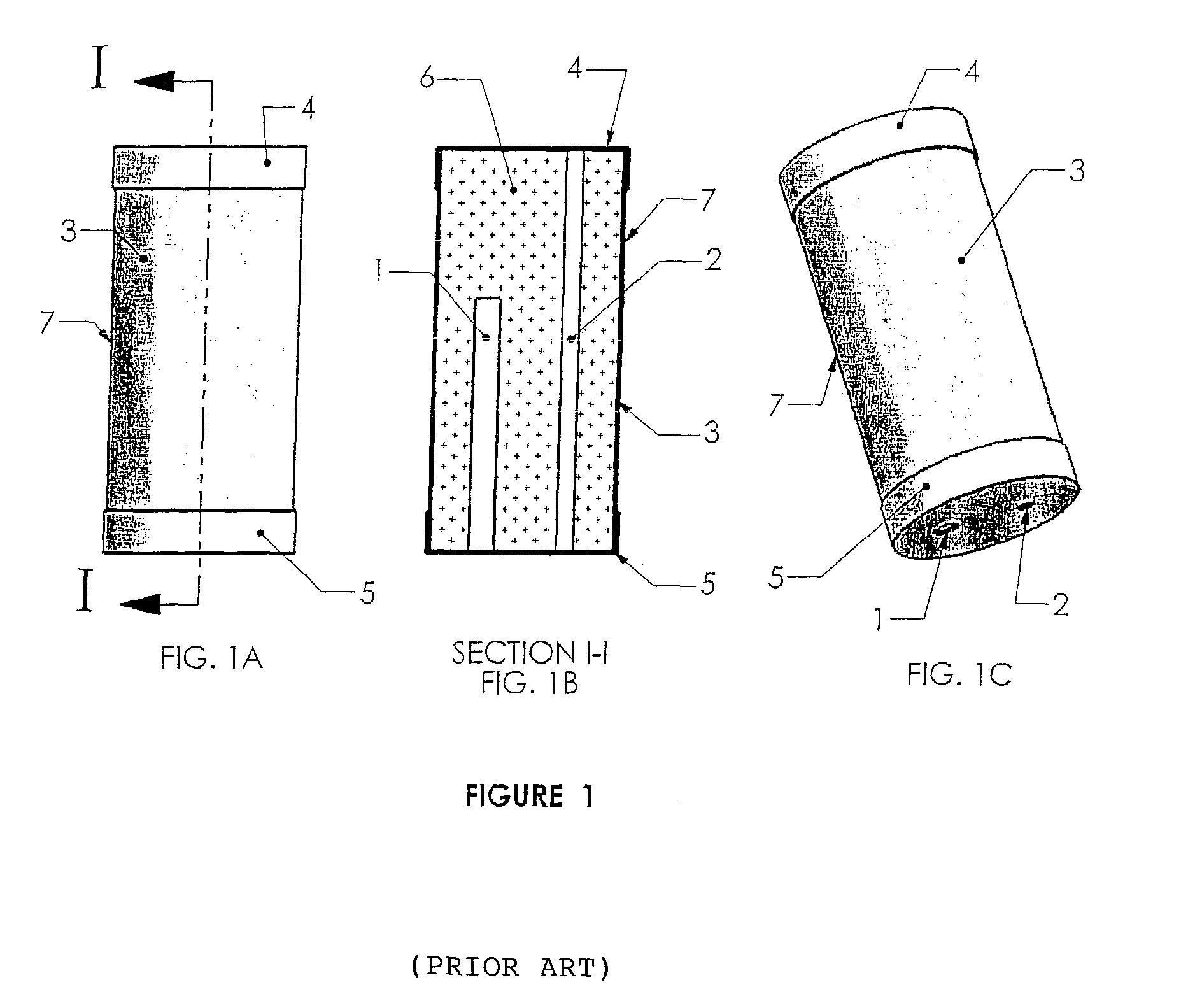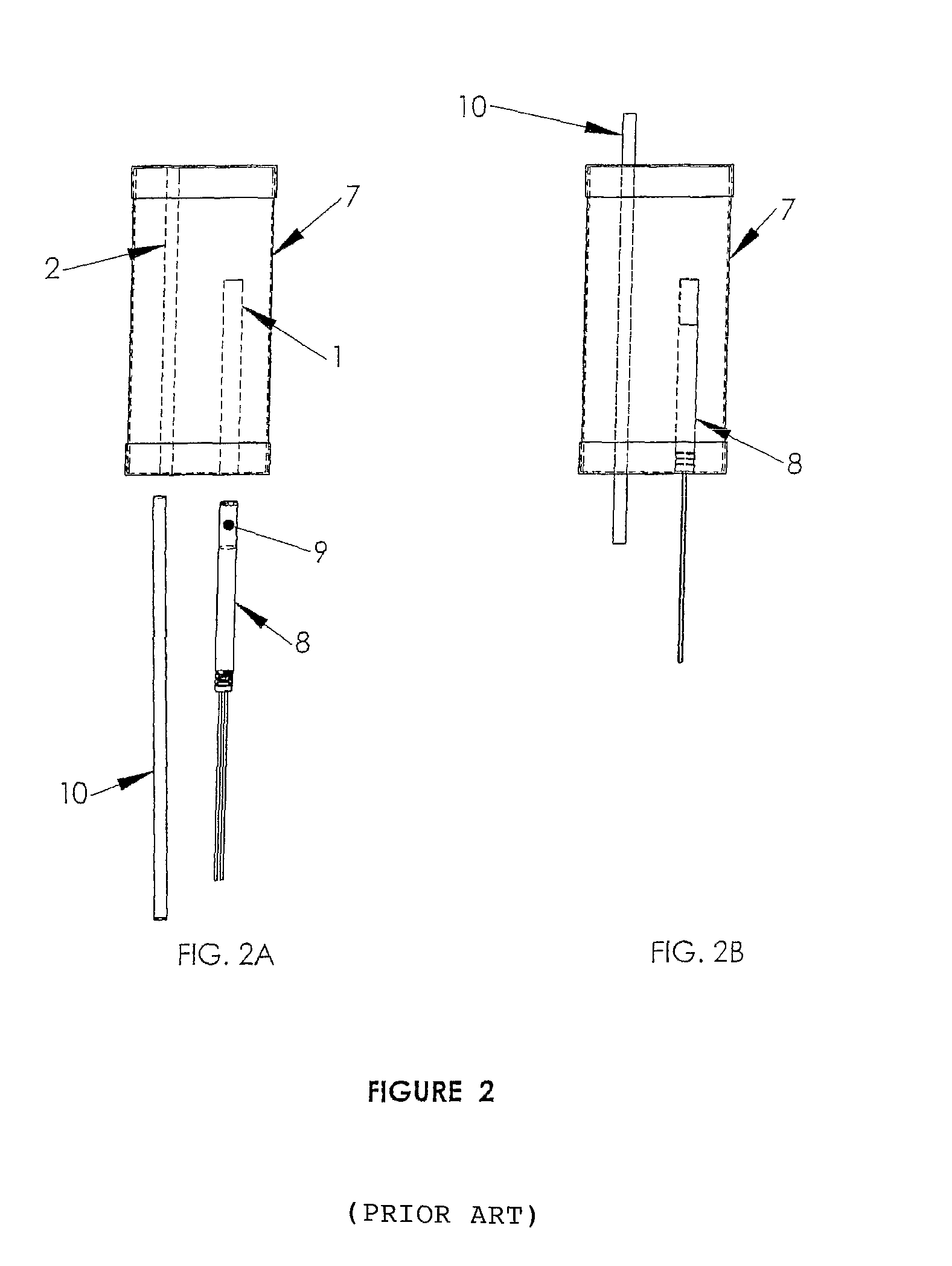Cast booster using novel explosive core
a technology of explosive core and cast booster, which is applied in the field of explosives and mining industry, can solve the problems of high energy generation in a very short period of time, high cost of pentolite, and relatively hazardous handling of pentolite, and achieve the effects of increasing the sensitivity of the sheath, low output, and increasing the cost of the sheath material
- Summary
- Abstract
- Description
- Claims
- Application Information
AI Technical Summary
Benefits of technology
Problems solved by technology
Method used
Image
Examples
Embodiment Construction
[0052]Embodiments of the present invention are directed toward a booster for the initiation of relatively insensitive explosives and a process for manufacturing the same. The basic booster design utilizes a blasting cap sensitive or detonating cord sensitive core surrounded by a less sensitive sheath explosive. In accordance with an embodiment of the present invention, a cup shaped aperture is formed in the core to mate with a blasting cap. The process used to make the core and booster allows for simple adjustments to account for various construction materials and end use applications. In addition, the process used to form the core and final booster assembly reduces the required manufacturing labor due to inherent design features of the core and booster that make them suitable for automated manufacturing techniques.
[0053]The coupling between the initiation apertures and the core is critical to the proper function of a core-sheath style booster. FIGS. 5 A, B & C depicts a core / sheath...
PUM
 Login to View More
Login to View More Abstract
Description
Claims
Application Information
 Login to View More
Login to View More - R&D
- Intellectual Property
- Life Sciences
- Materials
- Tech Scout
- Unparalleled Data Quality
- Higher Quality Content
- 60% Fewer Hallucinations
Browse by: Latest US Patents, China's latest patents, Technical Efficacy Thesaurus, Application Domain, Technology Topic, Popular Technical Reports.
© 2025 PatSnap. All rights reserved.Legal|Privacy policy|Modern Slavery Act Transparency Statement|Sitemap|About US| Contact US: help@patsnap.com



